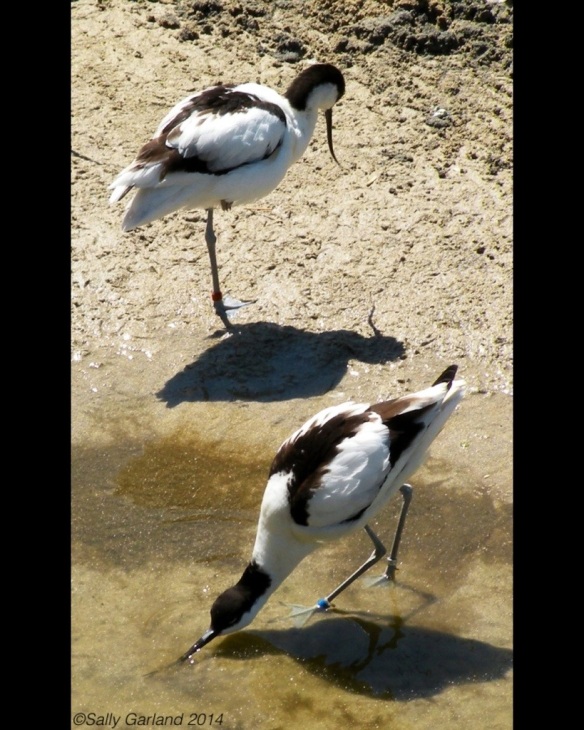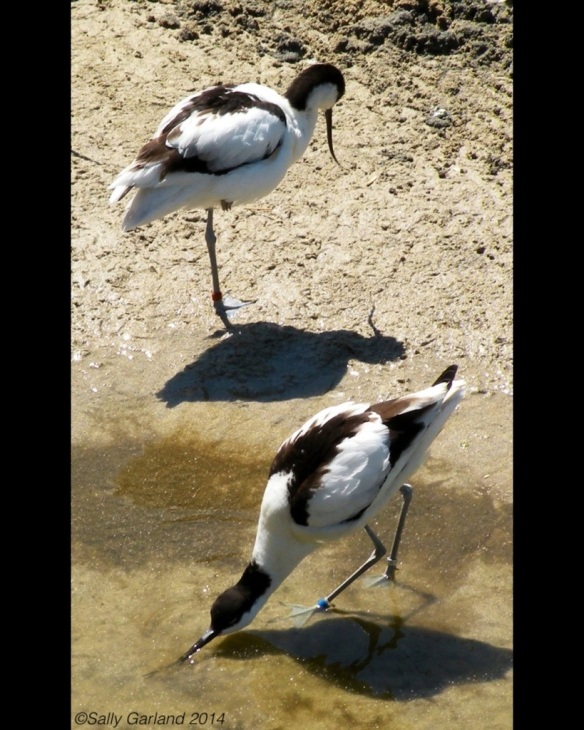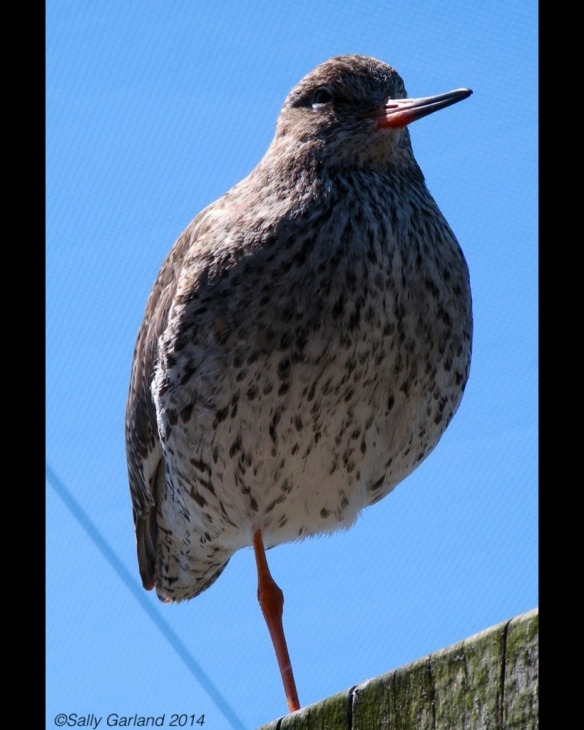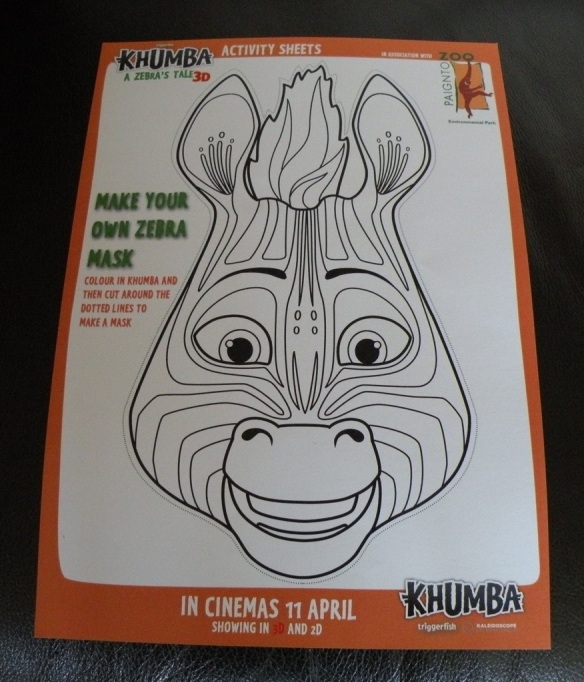There are a small group of immensely wealthy people in most countries of the world including our own…the One Percent…who hold almost half of each countries wealth in their bank accounts.
This prophesy, an old prophesy from an enlightened and knowing Cree American Indian, is or should be, a wake up call to these hoarders. Destroy our beautiful planet to increase your already bulging coffers at your and our peril.
Monthly Archives: May 2014
Avocet. Pied Avocet (Recurvirostra avosetta)
Avocet. Pied Avocet (Recurvirostra avosetta)
Pied Avocets are elegant birds. They have sharply contrasting black and white bodies and heads with a faint touch of sky blue beneath their wings and sky blue legs which are long and thin. Their distinctive beak is very long, slim and upturned. Males and females have similar plumage.

Pied Avocets often feed by scything their beaks along the water from side to side. They eat crustaceans and insects.

They breed in England in summer, but migrate to Africa in the winter, though some stay in the warmer south of England or southern Spain during winter. They lay eggs on the ground in shallow, untidy nests. Their chicks are a fluffy pale grey, dull black and sepia.

In the wild Avocets nest near Black-headed gulls because they chase the predators away, but have to be on the lookout for the possibility of their chicks being taken by these same gulls.
They are very protective of their chicks and can be seen spending a lot of time chasing the other birds away. Whether other birds step too close to the chicks or fly above them, the parent Avocet is ready to defend by charging at the other bird, flapping wings and calling.
Why do birds stand on one leg?
Why do birds stand on one leg?

All kinds of birds stand on one leg, from the large Flamingo to the much smaller Avocet. Why ?
The habit is more often seen on cold days which would suggest there is a warming strategy to it. When tucking a leg into their feathers a bird can halve exposure to cold and keep at least one leg warm.
Birds have their veins close to their arteries, so that when the blood moves along the arteries it warms the cold blood moving along the veins. Standing on one leg with the other leg tucked inside feathers halves heat loss.
Many birds that stand on one leg are waders..shore birds, which leads some to believe they are drying and warming legs that have been emerged in cold water.

Some birds are so comfortable in the one legged position that they remain on one leg when they want to move and so hop along. For many the one leg below their bodies places a foot directly under their centre of gravity so balancing is easier.

There are other suggestions as to why birds use the one legged strategy: simply to rest their legs…one at a time, to resemble a small tree or plant when hunting and so on.
Living Coasts, Torquay, Devon.UK (Coastal Life)
Living Coasts, Torquay, Devon.
UK

As a bird lover I find the containment of birds in small spaces uncomfortable viewing.
However a place like Living Coasts in Torquay, Devon has a lot to offer. It allows people to see close up British birds that they may not ever have seen otherwise. It lets people see, especially at this time of year, birds interacting, mating, nesting and producing chicks.
Here an Avocet and chicks.

I think it makes the need for protection of birds and all wildlife more personal. No longer just a photo in a book or a brief glimpse on TV, but a real, living, breathing creature.
Here Inca Terns and a Ruff.

The birds of Living Coast have space to spread their wings or stretch their legs. They live in an aviary on the coast. As aviaries go it is a good one, situated in a perfect environment and is certainly worth a visit.
I saw this bird, a Tufted Puffin, diving under man-made waves, swimming and gracefully moving in circles like a ballerina….

There are also small enclosures for otters, seals, and penguins and glass tanks for fish, starfish and seahorses. The seals and penguins can be seen on a lower level swimming and diving.
Paignton Zoo, Devon.
Paignton Zoo, Devon.

I grew up in London and as a child was a regular visitor to London Zoo, but I became increasingly uncomfortable with the conditions animals lived in. Years ago large cats and apes were enclosed in tiny cages where they paced to and fro and brown bears and polar bears walked up and down small ledges in a distressed state.
London Zoo has improved considerably, but I still had my doubts about the benefits of zoos until I visited Paignton Zoo.
Spread over a wide area the zoo gives animals space and a more natural environment. The fact that many animals and birds breed there at this time of year shows that they are content. Here a photo of a Hooded Pitta with nesting material in its beak.

The fairly new buildings showcasing the Tropics……the Desert…..and the Crocodile Swamp are especially pleasing.
The Zoo is an educational facility and there is an emphasis on this aspect of it; environmental concerns, deforestation, plastic pollution, conservation…. which is so necessary in this materialistic world.

I also like that there are few pristine lawns and flower beds and more natural, wildflower areas. Good for our native flowers and insects.

I still have a reservation…..having lived in the amazon rainforest I have seen large birds; birds of prey, owls and parrots in full flight. Their often huge wings outstretched as they soar across the canopy. They often have huge territories from roosting trees to feeding grounds. Seeing them in cages unable to fly except for the short hop from one perch to the next fills me with sadness.
These photos, taken this week of a fledgling owl, say it all, I think.

Despite this I will still visit Paignton Zoo frequently. Its definitely one of the best, if not the best zoo in the UK. As a member you can enjoy a couple of hours in a very pleasant environment and a chance to see animals and birds close up.
Grey Heron in Devon.
Grey Heron in Devon.

Spotted the Grey Heron this week in Devon.
This elegant bird had long legs and a long neck with a long,dagger-like beak.
The upper body was grey, the neck, head and chest were white. It had a black crest and stripe to the chest.
Herons feed by standing motionless for long periods on river banks or wadding through water and then stabbing at passing fish, small mammals or amphibian.

The Grey Herons territory spreads across Europe, Africa, Asia and Russia.
Photography, nature and the need for children to ‘see’ the world they live in.
Photography and nature.
Since becoming more interested in photography ( and it’s never too late ), I have become fascinated by the ‘small’, whether its tiny insects or the inside of flowers.
Photography teaches you to look at things in a way that you may not have before.
When most people look at flowers they see them as a whole, in a bunch or in a garden.. But look closer at the individual flower or insect and they are amazing.
Take this Hover-fly on a clematis flower. Before I took a closer look they were simply annoying little black flies. Than I took, by accident, a close-up photo and my view of these little creatures dramatically changed and started me on a new hobby. These flies were beautiful with their rainbow touched wings and an intricate brown and gold head and body.

The second photo of a Hover-fly was equally as fascinating showing its enormous eyes and a furry body.

The Weever, I found in the bath. Small and insignificant against the white enamel it took on a new form when magnified in a photo and the Damselflies surprised me with their antics in spring on a local pond.

Flowers are beautiful in a bunch but looked at individually they take on a whole new meaning.
Delicate petals enclose varied and different centres. The humble Marigold looks stunning close up, the Magnolia usually seen as a bush/tree with closed flowers has an exotic centre when opened, an Aster has a middle like a liquorice Allsort and a weed, the Dandelion is quite gorgeous.

Butterflies and moths look pretty and lend colour when seen flitting about the hedges and flowers, but seen close up their beauty, the intricate patterns on their wings and their heads, their delicate antenna and huge eyes, make them breathtaking. Here a Red Admiral and a Waved Umber moth.

Last but certainly not least are eyes. Windows to the emotions, whether a humans or an animals, they can say so much without the need for words. Here are a few of my photos in which the eyes are the focus.

I think that giving children a cheap camera and encouraging them to ‘look’ would give them a love and respect for nature that is desperately needed in this materialistic world.
The Waved Umber Moth…(Menophra abruptaria)
The Waved Umber Moth…(Menophra abruptaria)
This moth was found on my black front door. It stayed in place for several days. It looked like a stray leaf and almost got brushed away until I looked closer.

A soft brown coloured moth marked with darker brown wavy lines, it is a member of the Geometridae family. It’s wing patterns are bark-like and when on unpainted wood are highly camouflaged. The moth has a wing span of 36-42mm.
They fly from April to June. This one was seen in May in Torquay, Devon. It is common in the south of England, less so in the north.

The Waved Umber larvae feeds on Ligustrum ovalifolium (Privet) and Syringa vulgaris (Common Lilac).





















